Crew trains in Russia; managers set Zvezda Service Module launch date; KSC readies hardware
Activities at multiple facilities in the United States, Russia and Kazakhstan continued in June 2000 in preparation for the Expedition 1 crew to take up residence aboard the International Space Station (ISS) four months later. The crew returned to Russia for a month-long training session, senior managers set the launch date for the next Russian module and at both the Baikonur Cosmodrome and the Kennedy Space Center (KSC), workers prepared the next elements for launch to continue assembly of ISS.
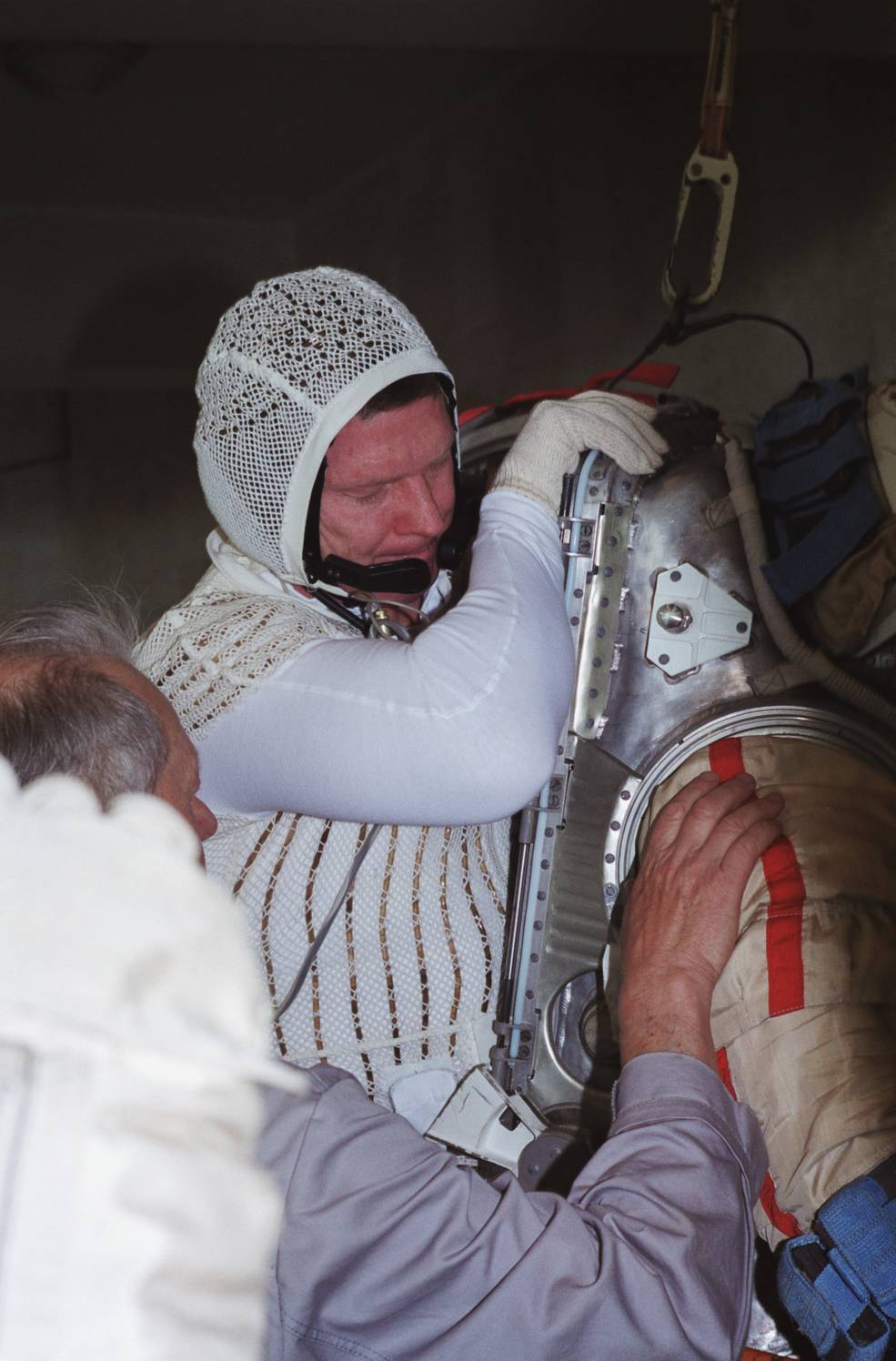
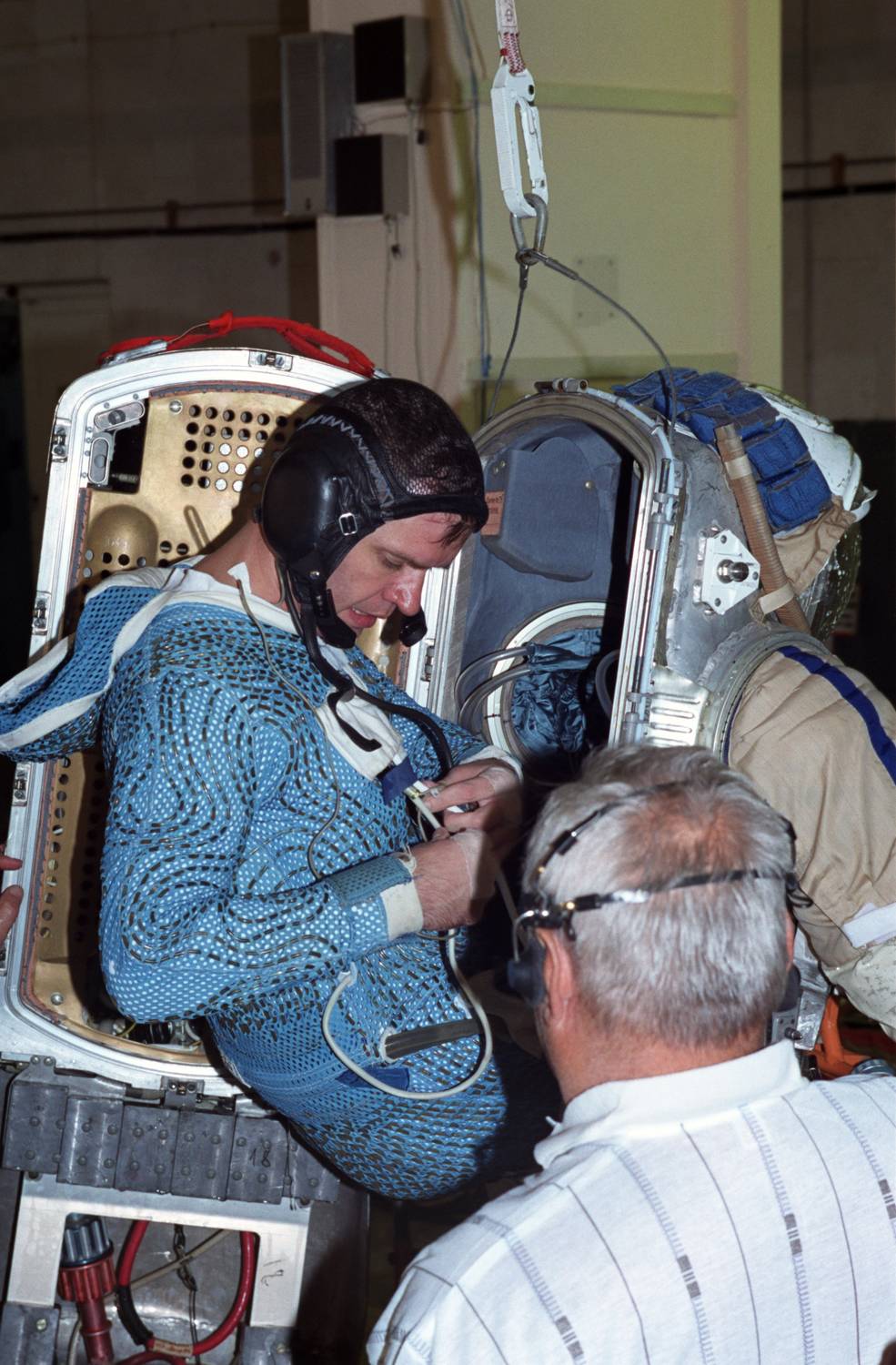
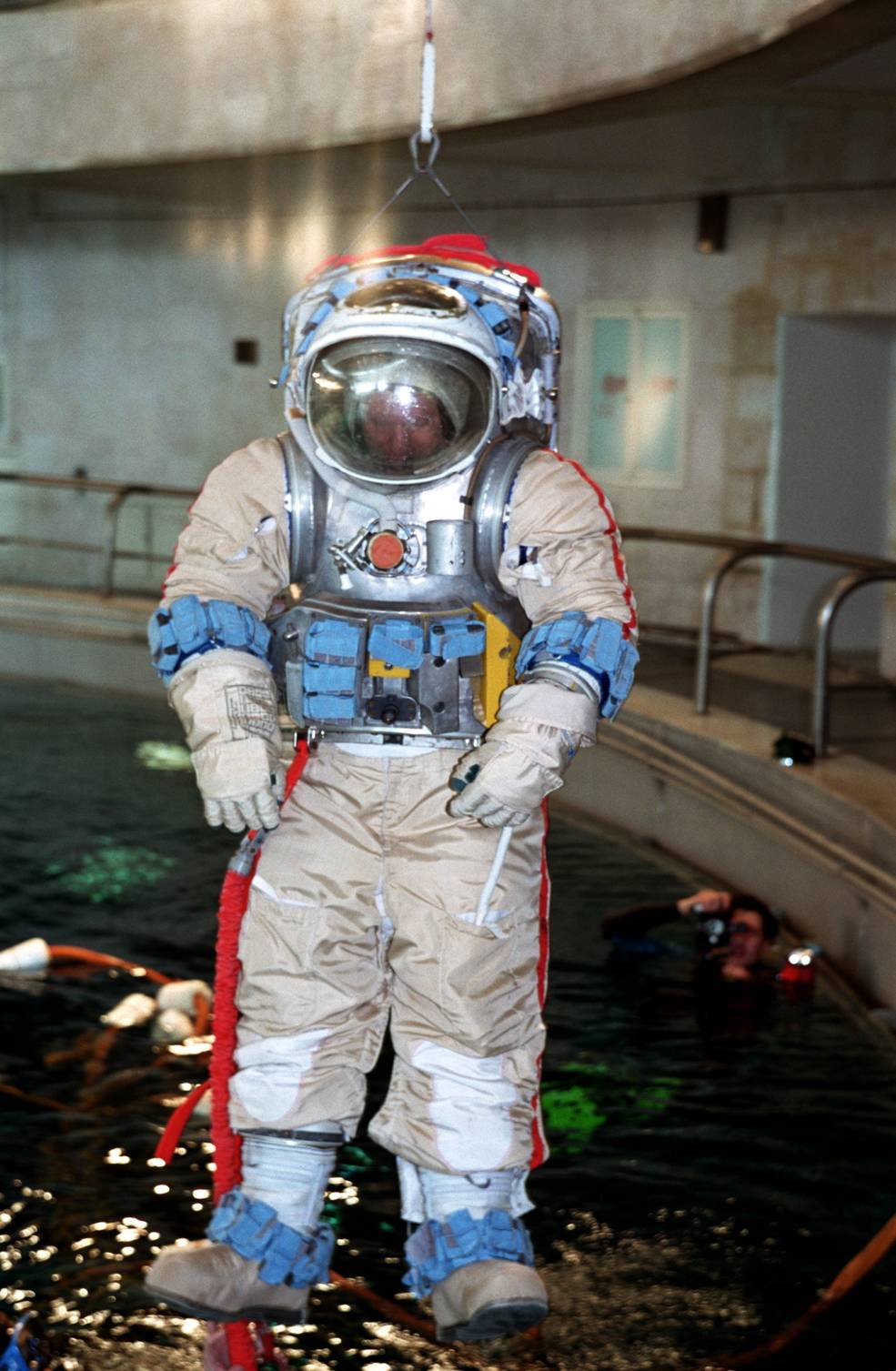
Left and middle: Shepherd and Gidzenko ingressing into training versions of
Orlan suits before an EVA training session in the Hydrolab at GCTC.
Right: Technicians lower Shepherd into the water.
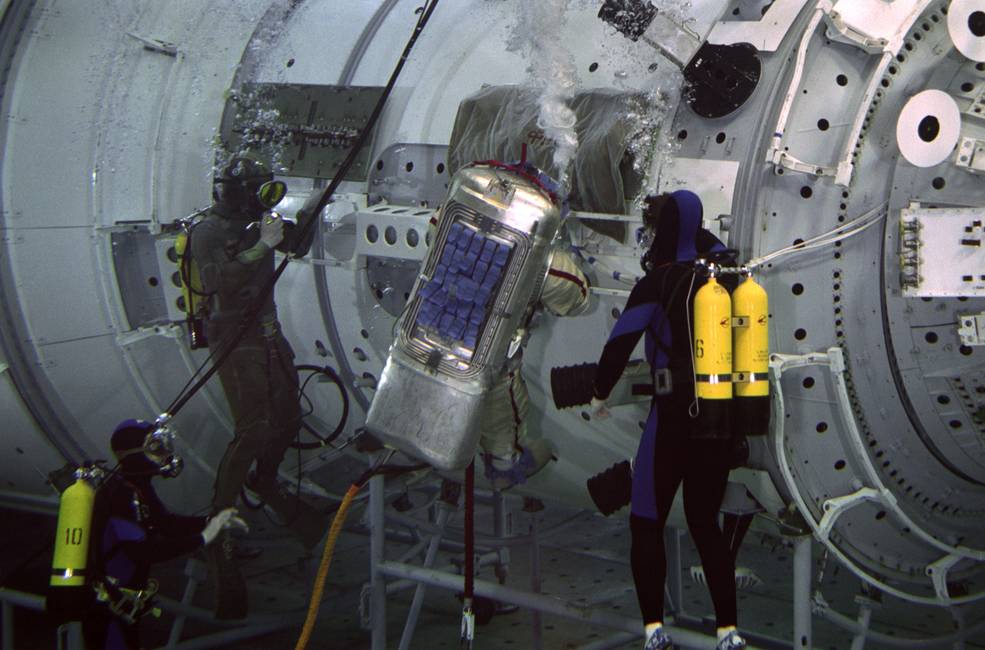
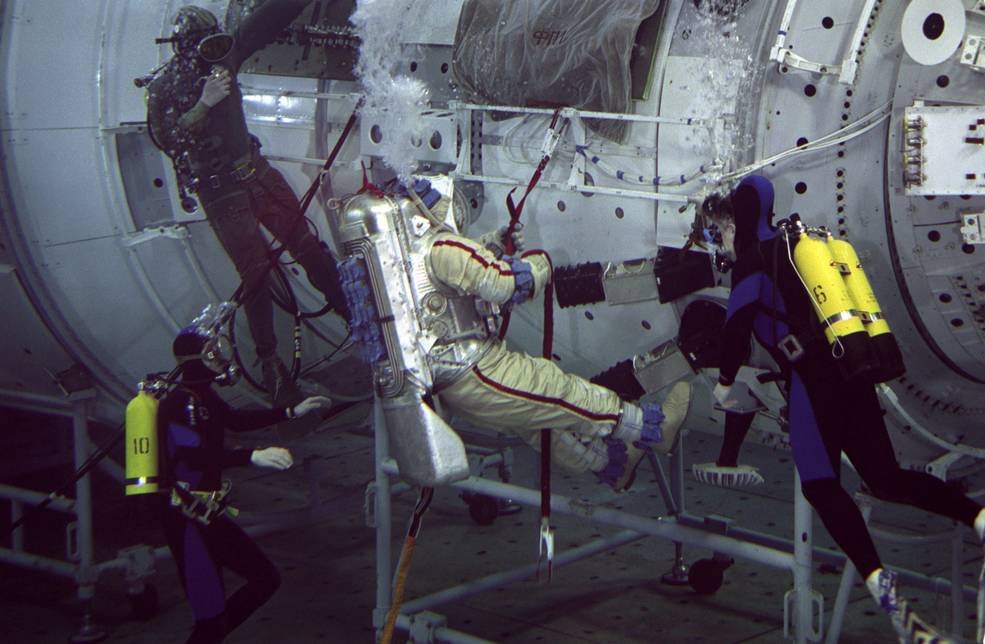
Two views of Shepherd during a training session in the Hydrolab at GCTC
with a mockup of the Zvezda Service Module.
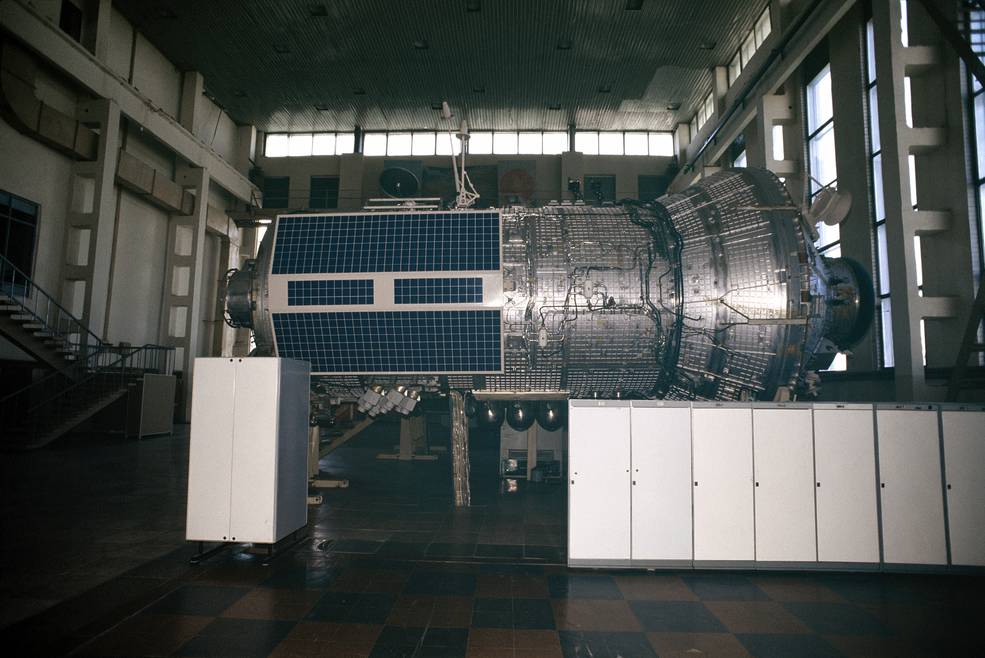
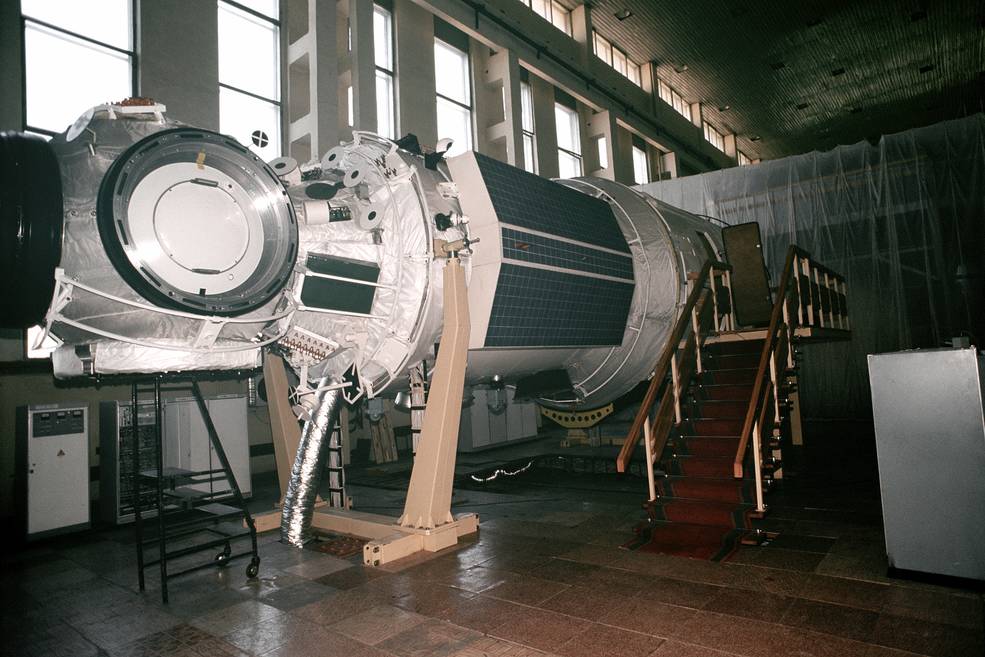
Training mockups of the Zarya (left) and Zvezda modules at GCTC.
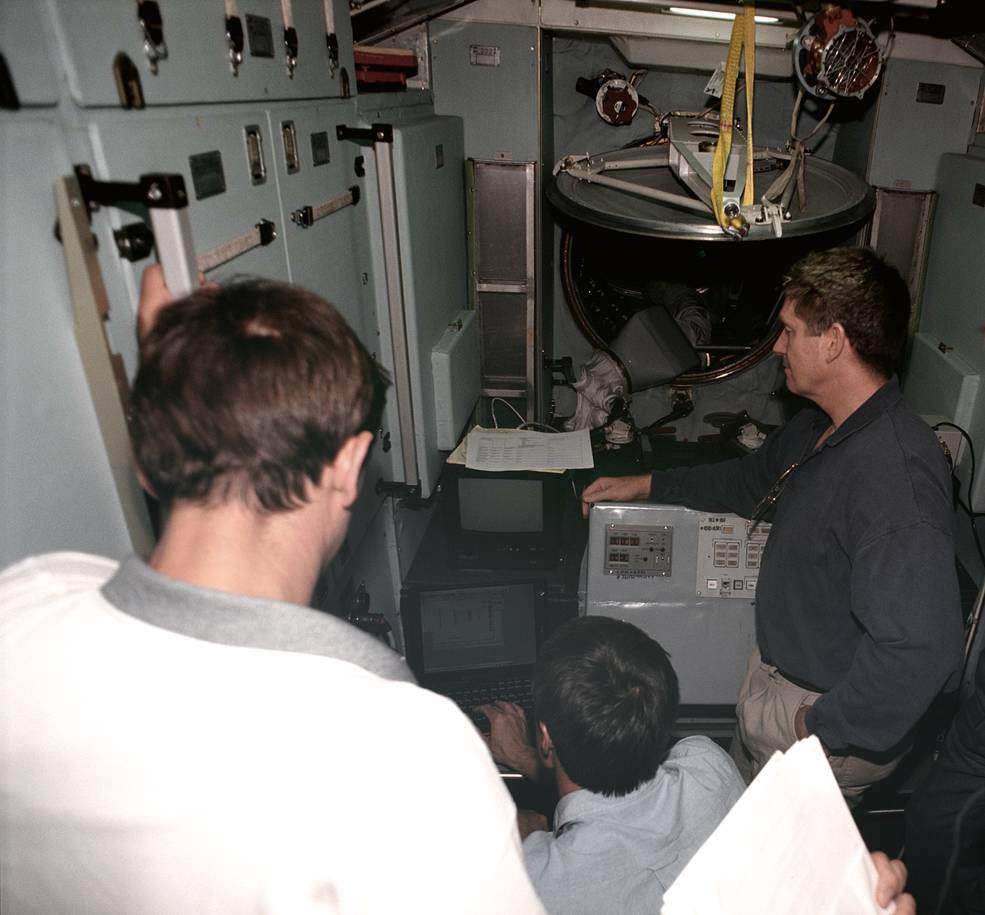
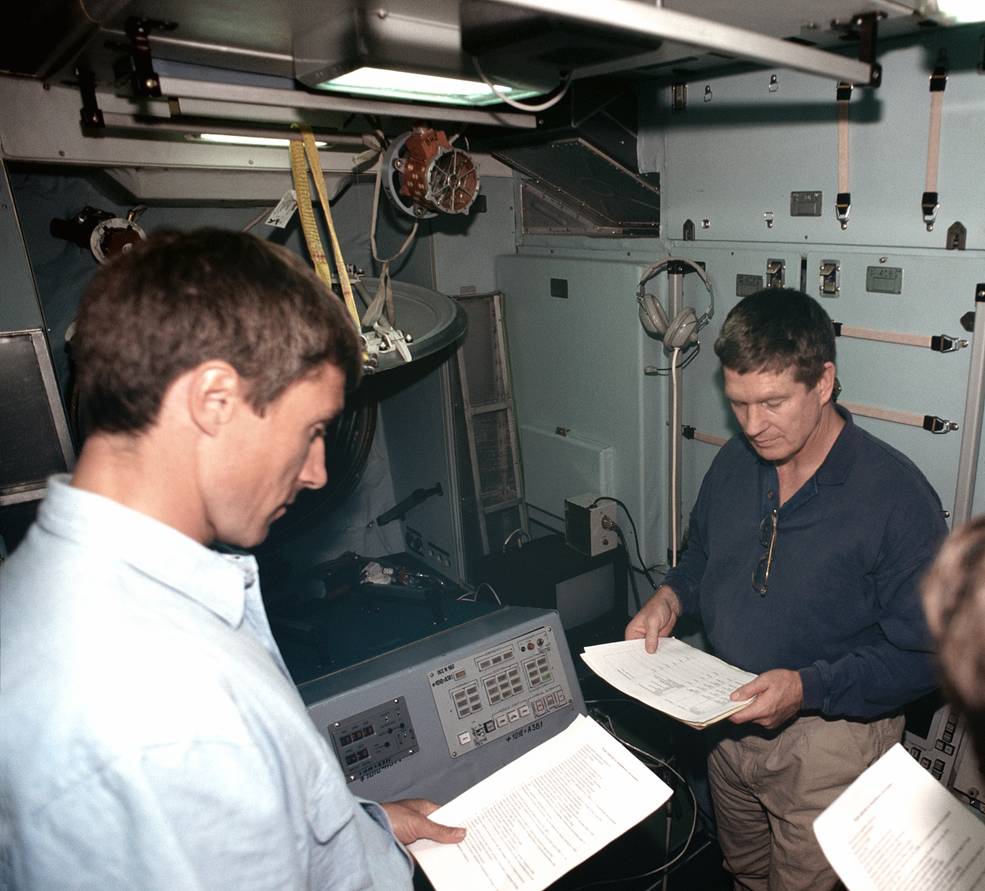
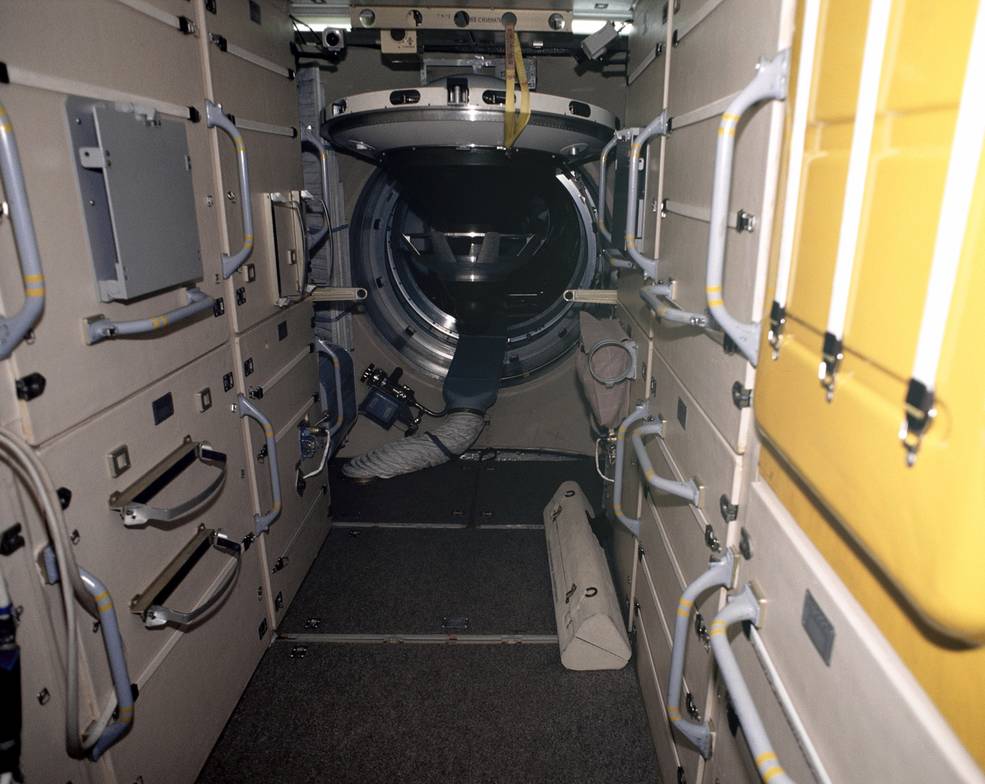
Left: Expedition 1 crew of (left to right) Gidzenko, Krikalev and Shepherd training in the
Zvezda mockup at GCTC. Middle: Krikalev (left) and Shepherd, with Gidzenko just out of view
at right, training in the Zvezda mockup. Right: View inside the Zarya training mockup.
The Expedition 1 crew of Commander William M. Shepherd, Flight Engineer Sergei K. Krikalev, and Soyuz Commander Yuri P. Gidzenko and their backups Kenneth D. Bowersox, Mikhail V. Tyurin and Vladimir N. Dezhurov returned to Russia for four weeks of training between May 22 and June 16. In late May, they participated in the Crew Equipment Interface Test in the Zvezda module at Baikonur, their last look at the module before they took up residence once in orbit. Back at the Gagarin Cosmonaut Training Center (GCTC) in Star City outside Moscow, the crews trained on Soyuz-TM spacecraft systems and passed their exams on the Russian Segment radio communications system and onboard equipment control system. In GCTC’s Hydrolab, they participated with crewmembers of the STS-106 crew to train for the spacewalk planned for that mission, and trained for possible spacewalks during their long-duration expedition aboard ISS.
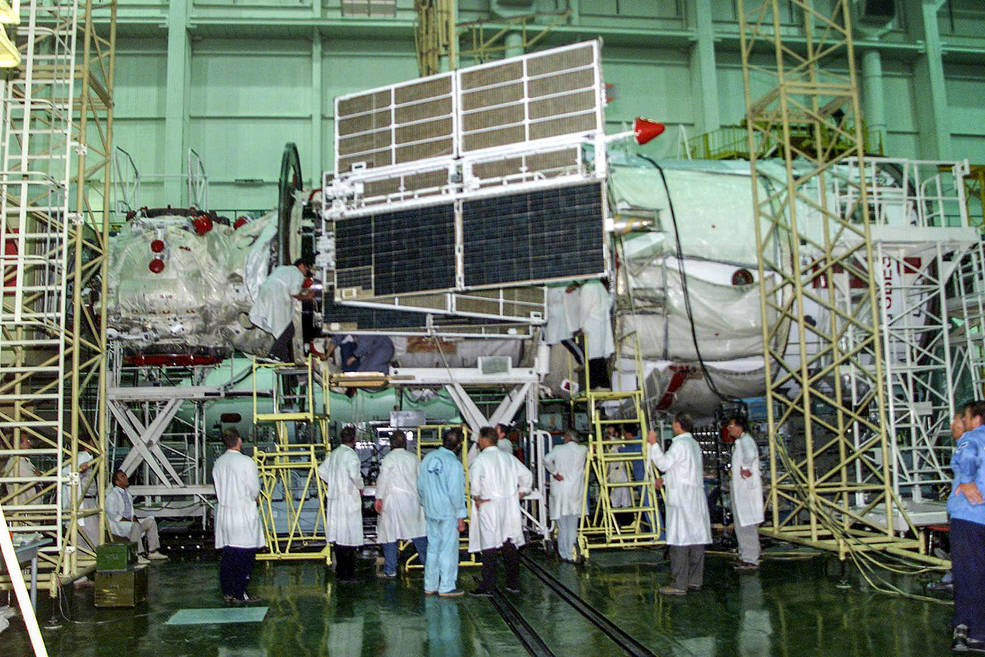
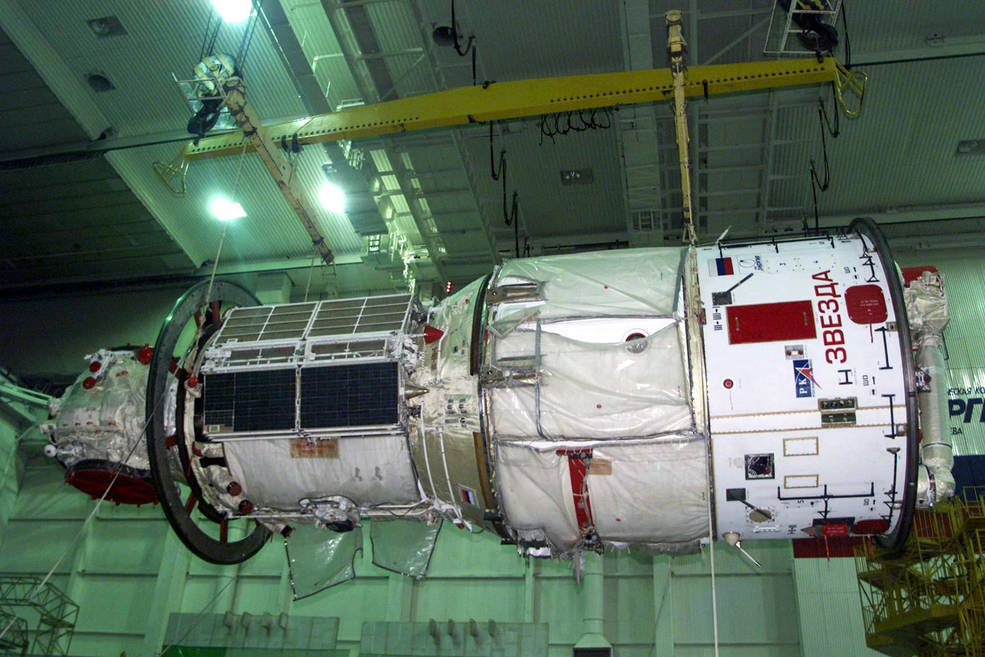
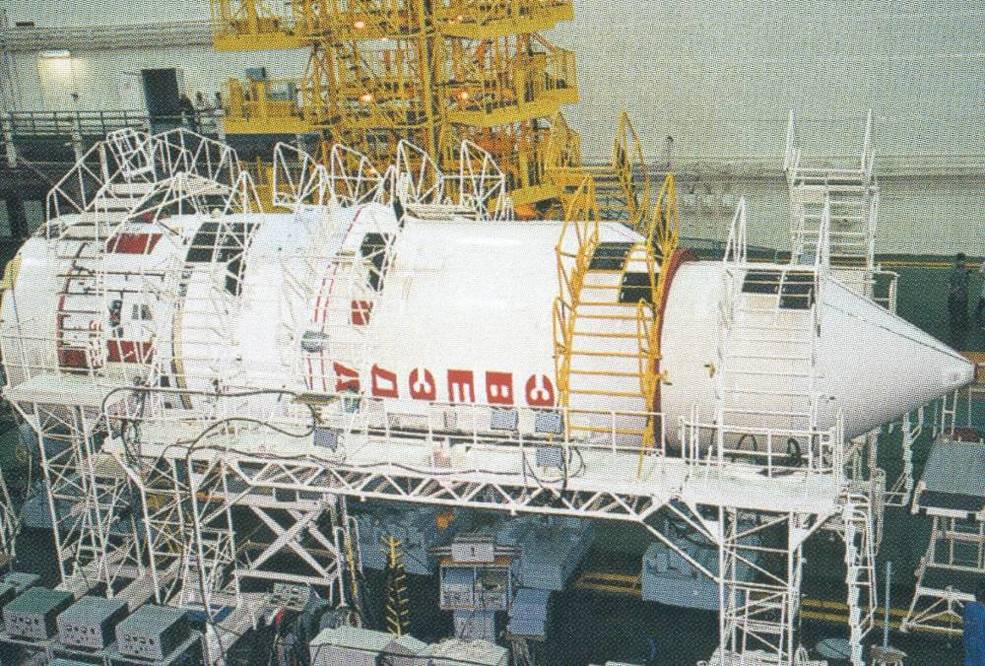
Left: Engineers install and test the solar arrays on Zvezda.
Middle: Weighing of Zvezda.
Right: Zvezda installed in its launch shroud.
Senior ISS managers met in Moscow on June 26 and confirmed the launch date for the next space station element, the Russian Zvezda Service Module, as July 12, 2000. Preparations for the launch of the module continued at Area 254 of the Baikonur Cosmodrome in Kazakhstan. Engineers installed and tested the module’s two solar arrays in early June followed by handrails and thermal blankets. They followed that on June 20 with pressurizing the module and closing its hatches in preparation for launch. Zvezda’s hatches remained closed until the STS-106 crew arrived in September. The engineers weighed the module and determined its center of mass and then placed it into its launch shroud. The Proton rocket for Zvezda’s launch arrived at Baikonur on May 28. Two other Proton launches took place on June 24 and July 5 to certify the modifications made to the rocket’s second stage following a launch failure in 1999. On June 22 flight controllers at NASA’s Johnson Space Center in Houston and at the Russian Flight Control Center in Korolev began a series of joint integrated simulations to prepare for Zvezda’s docking to ISS and integration with the Zarya and Unity modules.
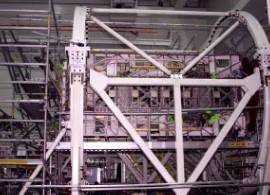
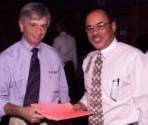
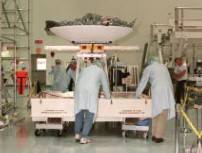
Left: The P6 truss segment in the SSPF at KSC. Middle: Greene (left) and Mills during the P6 acceptance event.
Right: Technicians moving the High Gain Antenna prior to mating it with the Z1 truss in the SSPF.
NASA formally accepted the P6 Integrated Truss Segment from the Boeing Co. Jay H. Greene, deputy manager for the ISS Program, accepted the element at KSC’s Space Station Processing Facility (SSPF) from Joseph C. “Joe” Mills, deputy ISS program manager at Boeing. The handover followed an extensive review by an Acceptance Review Board that assessed all the engineering and testing results documents to ensure the element’s readiness for the next phase of prelaunch preparations. The 45-foot long P6 truss included two solar arrays, batteries and three radiators to provide power and cooling for the expanding space station. The P6 truss launched on the STS-97 mission in November 2000 and crews installed it atop the Z1 truss. Later in the assembly of ISS, after three other sets of solar arrays arrived with their truss segments, astronauts relocated the P6 element to the outboard end of the port truss. Elsewhere in the SSPF, engineers installed the high gain communications antenna onto the Z1 truss segment being prepared for launch aboard STS-92 in October 2000. And in KSC’s Orbiter Processing Facility, engineers began processing Space Shuttle Atlantis recently returned from the STS-101 flight for its next mission, STS-106 in September 2000.
To be continued…




























